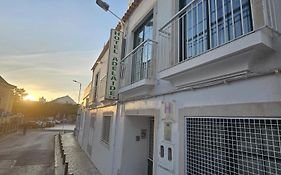
Embed Image

Embed Image
Carmo Church & Bones Chapel in Faro, Portugal, is a stunning example of Gothic architecture. The church was originally built in the late 14th century, and its intricate design and craftsmanship are a testament to the skill of the builders of the time. One of the most notable features of the church is the macabre yet fascinating Bones Chapel, also known as the Capela dos Ossos. This small chapel is adorned with the bones and skulls of over 1,200 monks, creating a haunting and thought-provoking atmosphere that captivates visitors. The chapel serves as a reminder of the transitory nature of life and the inevitability of death, making it a unique and culturally significant attraction for those interested in historical and religious symbolism.
Visitors to Carmo Church & Bones Chapel have the opportunity to explore the rich history and cultural significance of this remarkable site. The architectural style and unique features of the church, including its ornate detailing and towering arches, provide insight into the religious practices and rituals of the time. Additionally, the Bones Chapel offers a glimpse into the cultural and philosophical perspectives surrounding mortality and the afterlife. Visitors have the chance to learn about the religious and spiritual symbolism associated with the display of human bones and skulls, as well as engage with the thought-provoking themes and concepts that the chapel embodies.
For those interested in exploring the site, guided tours are available, providing in-depth information about the historical background and significance of Carmo Church & Bones Chapel. Visitors can also appreciate the macabre beauty of the Bones Chapel and take part in cultural events and festivals related to the site, offering a deeper understanding of the traditions and customs associated with the church and chapel. With its intriguing blend of history, architecture, and cultural symbolism, Carmo Church & Bones Chapel is an essential destination for anyone looking to delve into the captivating cultural heritage of Faro, Portugal.





















